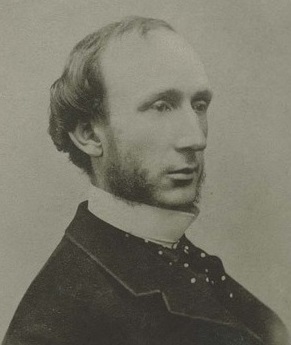Martin F. Conway facts for kids
Quick facts for kids
Martin F. Conway
|
|
|---|---|

Photo by J. H. Leonard (Topeka, KS), circa 1882
|
|
| Member of the U.S. House of Representatives from Kansas's at-large district |
|
| In office January 29, 1861 – March 3, 1863 |
|
| Preceded by | None |
| Succeeded by | Abel Carter Wilder |
| Personal details | |
| Born | November 19, 1827 |
| Died | February 15, 1882 (aged 54) |
| Political party | Republican |
Martin Franklin Conway (born November 19, 1827 – died February 15, 1882) was an important figure in American history. He served as a U.S. congressman and a diplomat (called a consul) in France. He was also a strong supporter of ending slavery, known as an abolitionist. Conway played a key role in the Free-State movement in Kansas, which aimed to make Kansas a state where slavery was not allowed.
Contents
Early Life and Education
Martin F. Conway was born in Harford County, Maryland. His father, Dr. W. D. Conway, was a surveyor for the United States Navy. His family owned enslaved people.
When Martin was fourteen, he left school and began learning how to be a printer in Baltimore. He became very good at it and helped organize a national group for printers called the National Typographical Union. In 1851, he married Emily Dykes. He then studied law and became a lawyer in 1852.
Moving to Kansas
In 1854, Conway moved to the Kansas Territory. At first, he worked as a special reporter for a newspaper called the Baltimore Sun.
Soon, he went back to working as a lawyer. He quickly became involved in the politics of the territory. Kansas was a new territory, and there was a big debate about whether it would allow slavery or be a "free" state.
Free-State Movement
Conway was a strong supporter of the Free-State movement. In March 1855, he was chosen to be part of the first local government group, the Territorial Council, for Riley County.
Later in 1855, he was very active at a Free-State meeting in Big Springs. He also became a delegate for the Topeka Constitutional convention. This was a meeting to write a set of rules for Kansas to become a state. In January 1856, he was elected as the Chief Justice of the Supreme Court under this Topeka constitution. In 1858, he led another important meeting, the Leavenworth Constitutional Convention.
Serving in Congress
The next year, Conway was elected to represent Kansas in the U.S. Congress. This happened under the Wyandotte Constitution, which was the final set of rules for Kansas. When Kansas officially became a state in January 1861, Martin F. Conway was its very first congressman. He served as a Republican until March 3, 1863.
While in Congress, Conway was known for being against slavery. He also took part in a "peace convention" in Washington, D.C. in 1861. This meeting tried to find a way to avoid the Civil War.
The Emancipation Proclamation, which freed many enslaved people, became law on January 1, 1863. Conway spent that day with famous writers and activists like Ralph Waldo Emerson and William Lloyd Garrison.
Later Years
After his time in Congress, Conway continued to live in Washington. In June 1866, he was appointed as a diplomat (consul) to Marseille, France. This meant he represented the U.S. government in that city.
Conway passed away at the age of fifty-four on February 15, 1882.
Images for kids


